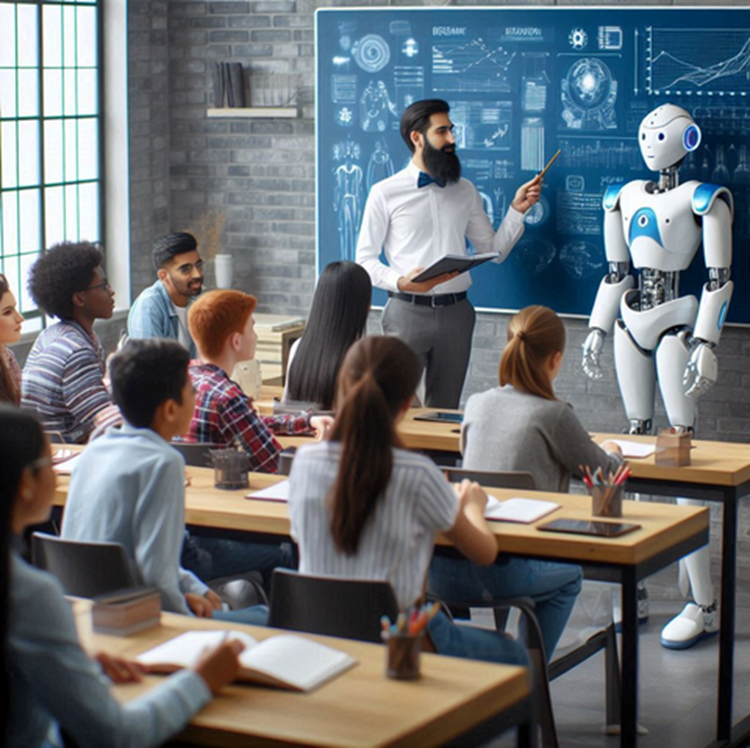Why Robotics in Education is Essential for Students

In today's rapidly evolving technological landscape, the integration of robotics into education has become increasingly imperative. As artificial intelligence and automation continue to shape our world, equipping students with the knowledge and skills to navigate this future is crucial. This article explores into the numerous benefits of incorporating robotics into educational curricula, exploring its impact on STEM education, problem-solving abilities, creativity, and overall student development.
Why robotics in education?
Robotics serves as a powerful tool for bringing up interest and engagement in Science, Technology, Engineering, and Mathematics (STEM) subjects. By providing a hands-on, project-based learning environment, robotics empowers students to apply theoretical concepts to real-world scenarios. Through the design, construction, and programming of robots, students develop a deeper understanding of fundamental principles in physics, mechanics, electronics, and computer science.
Engaging and Interactive Learning: Robotics projects offer a fun and engaging way for students to explore STEM concepts. The tangible results of their efforts can spark curiosity and inspire further exploration.
Practical Application of Knowledge: By building and programming robots, students can see how theoretical knowledge is applied in practical situations. This helps solidify their understanding and makes learning more meaningful.
Interdisciplinary Approach: Robotics often involves integrating concepts from multiple STEM disciplines, promoting a holistic understanding of the interconnectedness of these subjects.

Benefits of robotics in education
Developing Problem-Solving and Critical Thinking Skills
One of the most significant benefits of education in robotics is its ability to enhance problem-solving and critical thinking skills. When faced with challenges in designing, building, or programming robots, students must develop strategies to overcome obstacles and find innovative solutions. These experiences help them cultivate the ability to analyze complex problems, break them down into smaller, manageable steps, and think creatively.

Promoting Creativity and Innovation
Robotics education encourages creativity and innovation by providing a platform for students to express themselves and explore their ideas. When designing and building robots, students have the freedom to experiment with different materials, components, and programming techniques. This fosters a sense of ownership and empowers them to develop unique and innovative solutions.

Preparing Students for the Future Workforce
Education in robotics is essential for preparing students for the future workforce. As automation and artificial intelligence continue to advance, there is a growing demand for individuals with skills in robotics, programming, and technology. By incorporating robotics into their education, students can develop the competencies needed to thrive in a technology-driven world.

Robots in education examples
Robotics has become an increasingly integral part of modern education, providing students with hands-on experiences that foster creativity, problem-solving, and critical thinking skills. Here are some real-world examples of how robotics is being used in education-
- LEGO Mindstorms: This popular platform allows students to build and program robots using LEGO bricks and a programmable microcontroller. Students can learn about mechanical engineering, electrical engineering, and computer programming.
- Ozobots : These tiny robots can be programmed using colored markers, making them accessible to younger students. Ozobots can be used to teach basic coding concepts, color theory, and problem-solving.
- Sphero : This line of programmable robots includes the Sphero Bolt, which can be controlled using an app and has advanced features like a gyroscope, accelerometer, and infrared sensor. Students can use Sphero to learn about physics, engineering, and coding.
Future of Robotics in Education
The integration of robotics into education is no longer a futuristic concept but a rapidly evolving reality. As technology continues to advance, robotics is poised to revolutionize the way we teach, learn, and interact with knowledge.The future of robotics in education offers a glimpse into a world where personalized learning, enhanced engagement, and skill development are at the forefront.
Personalized Learning Experiences
One of the most promising aspects of robotics in education is its potential to deliver highly personalized learning experiences. With the aid of intelligent robots, educators can tailor instruction to the specific needs and learning styles of individual students. Robots can provide targeted feedback, offer additional support, and adapt to the student's pace, ensuring that no child is left behind.
Enhanced Engagement and Motivation
Robotics offers a more interactive and engaging learning environment compared to traditional methods Students are more likely to be motivated and excited about learning when they can actively participate in hands-on projects and experiments. Robots can introduce complex concepts in a fun and accessible way, making learning a more enjoyable and memorable experience.
Bridging the Digital Divide
Robotics can also play a crucial role in bridging the digital divide. By providing access to technology and programming education, robotics can empower students from underserved communities and help them develop the skills necessary to succeed in the digital age. This can help to create a more equitable and inclusive learning environment.
Conclusion
In conclusion, the integration of robotics into education offers numerous benefits for students of all ages. By providing a hands-on, engaging, and interdisciplinary learning experience, robotics can foster interest in STEM subjects, develop problem-solving and critical thinking skills, encourage creativity and innovation, and prepare students for the future workforce. As technology continues to shape our world, it is imperative that we equip our students with the knowledge and skills needed to thrive in this rapidly evolving landscape.

